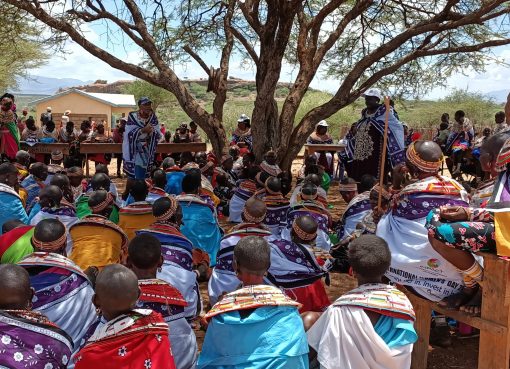Bulla Haji Dairy Farm, on the outskirts of Mandera Town, is a marvel in the dry region dominated by pastoralism.
On this farm, one encounters beautiful and well-kept Friesian dairy cows, an indication that they too can thrive in the arid region dominated by the Zebus and galla goats.
Using the 27-acre farm, the county is keen on turning the tide by training locals various aspects of zero-grazing.
Muhidin Ali Haji, the farm supervisor, says their main target is farmers living along rivers in Mandera since they can grow feeds in large quantities.
The farm was started with 12 Friesian animals sourced from Naivasha in 2015 and the number has since increased to 32 over the years following successful breeding using artificial insemination.
“Only one cow died due to the change in climatic conditions but the rest have adopted well and some have even calved down,” said Haji.
Friesians are heavy feeders and susceptible to various diseases therefore they need quality management to keep them productive.
“This is a fact that we knew and we were prepared to handle, the reason why we have grown our own pasture over the years,” he says, adding pneumonia and mastitis are some of the challenges they have to contend with.
Ticks are another challenge, thanks to the pastoralism culture, thus regular spraying is a must on the farm to curb them.
“Our highest milkers offer us up to 50 litres a day, milk which the county government buys to sustain the project,” says Haji.
The farm grows Sudan and napier grasses, and they use the former to make hay, ensuring that they have feed all the time.
“This farm is trying to change the perception that zero-grazing is impossible in Mandera and the locals have shown much interest in it already,” says Johora Mohamed, the Agriculture and Livestock Executive.
At least 200 locals trained on zero-grazing at the farm are awaiting public auctioning of the animals to start their ventures.
“We have a procurement committee currently evaluating the value of the cows on the farm before deciding on the price for auctioning. The exercise is expected to end this month and the interested farmers will get their cows by end month,” says Johara.
In zero-grazing, a farmer should ensure that the cowsheds are clean all the time, meaning that the cow dung should be removed every day.
In addition, the farmer should have a reliable source of water because the animals need a lot of drinking water as they feed on dry pasture.
“Once the cow is served, we feed it mainly on dairy meal and silage, which we later withdraw and replace with the dry matter that includes hay,” says Haji.
Two to three weeks before calving, which is the steaming up period, a cow is withdrawn from the herd and moved to the maternity bay where it is fed on dairy meal and silage high in protein to ensure high milk production after calving.
“This is a very exciting venture that I am ready and willing to sell all my indigenous livestock to start zero-grazing,” says Ahmed Abdulllahi, a farmer.
Shamsi Mohamud, the County Chief Officer for Livestock and Fisheries, says livestock is the main source of food and income in the county, providing 95 per cent of household income but most of the animals are reared for beef.
“We believe this is the time to train our community new livestock farming techniques for more profits,” she says. “We know it may take time but it is possible to transform residents from nomadic pastoral culture to zero-grazing,” she adds.
She notes it is encouraging that despite the high temperatures of 35 degrees Celsius and 24 degrees Celsius, the Friesians are doing well in the region.
Friesians are best kept on large-scale producer farms with better resources but they are not the best producers when kept by small-scale farmers with limited feed resources.
They are outstanding milk producers and if bred under good management, they can be milked up to three times a day. However, their milk has the lowest butterfat content of 2.5 to 3.6 per cent and about 3.1 per cent protein.
By Dickson Githaiga




